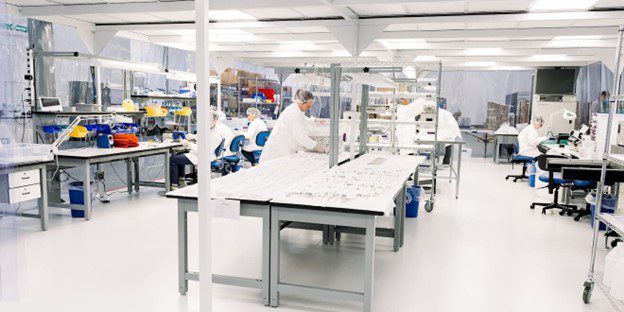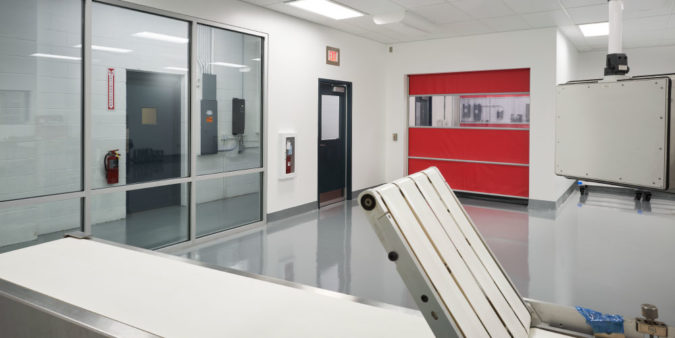FDA Classification of Clean Rooms

Clean Room Standards and Regulations
Clean rooms must conform to stringent regulations, including the FDA's Current Good Manufacturing Practice (cGMP) guidelines. These guidelines dictate the acceptable limits of airborne particulate contamination, aligning with international standards such as ISO 14644. According to ISO 14644-1, clean rooms are classified into various classes based on the maximum allowable particles per cubic meter of air.
Classification Categories
The FDA classifies clean rooms into categories based on particle count. For example, a Class 100 clean room allows no more than 100 particles of size 0.5 micrometers or larger per cubic foot of air. In comparison, a Class 10,000 clean room permits up to 10,000 particles per cubic foot. These stringent standards are essential for environments where sterile products are manufactured, ensuring minimal contamination risk.

Environmental Control Parameters
Maintaining specific environmental conditions is critical in clean rooms. Temperature should generally be kept between 20°C and 22°C, with relative humidity levels maintained at 30% to 60%. These parameters help prevent microbial growth and maintain the stability of sensitive pharmaceutical products, reducing the risk of contamination.
Relevant Standards and Guidelines
FDA cGMP Regulations: 21 CFR Parts 210 and 211.
iso 14644-1: Cleanrooms and associated controlled environments – Part 1: Classification of air cleanliness. This standard outlines the criteria for classifying clean rooms based on the maximum allowable concentrations of airborne particles.
iso 14644-2: Cleanrooms and associated controlled environments – Part 2: Monitoring to provide evidence of cleanroom performance related to air cleanliness. This guideline specifies the requirements for monitoring and demonstrating the performance of clean rooms.
ISO 14644-3: Cleanrooms and associated controlled environments – Part 3: Test methods. This document provides the methods for testing and validating clean room performance, ensuring compliance with cleanliness standards.

ISO 14644-4: Cleanrooms and associated controlled environments – Part 4: Design, construction, and start-up. This standard offers guidelines for the design and construction of clean rooms to achieve the desired performance levels.
iso 14644-5: Cleanrooms and associated controlled environments – Part 5: Operations. This guideline addresses the operational aspects of clean rooms, focusing on maintenance, cleaning procedures, and personnel training to ensure ongoing compliance.
FDA Guidance for Industry: This guidance document provides additional recommendations on the control of contamination in pharmaceutical manufacturing processes, emphasizing the importance of maintaining clean environments.
Annex 1 of the EU GMP Guidelines: These guidelines complement FDA regulations and provide specific requirements for the manufacture of sterile medicinal products, highlighting the significance of clean room environments.
ISO 7 or 8 Clean Room

1. Particle Count Standards
ISO 7 Clean rooms allow a maximum of 352,000 particles per cubic meter for particles ≥0.5 micrometers. ISO 8 Clean rooms, on the other hand, permit up to 3.5 million particles per cubic meter, indicating a lower cleanliness standard.
2. Airflow and Filtration
Both ISO 7 and 8 clean rooms utilize high-efficiency particulate air (HEPA) filters to maintain air quality. The airflow patterns are designed to minimize contamination, often employing laminar flow systems for optimal performance.
3. Environmental Control
Temperature and humidity control are critical in ISO 7 and 8 clean rooms. Typically, temperatures range from 20°C to 24°C, while relative humidity should be maintained between 30% and 60%, preventing microbial growth and product degradation.
ISO 7 and 8 Gowning Requirements

1. Required Attire: In ISO 7 clean rooms, personnel must wear coveralls, hoods, gloves, and shoe covers. For ISO 8, similar attire is required, but the level of protection may be slightly reduced depending on the specific application and contamination risk.
2. Hygiene Practices: Before donning gowns, individuals must undergo rigorous hygiene practices. This includes thorough handwashing and the use of hand sanitizers to minimize microbial load before entering the clean room environment.
3. Gowning Procedure: A systematic gowning procedure should be followed. Each layer of clothing must be applied in a specific order to ensure maximum protection, starting from shoe covers and ending with gloves and facial coverings.
The ISO Guidelines for Clean Rooms

Air Cleanliness Classification
ISO 14644-1 specifies classifications based on airborne particle counts.
Testing Methods
ISO 14644-3 specifies the testing methods for clean rooms, detailing procedures for verifying compliance with cleanliness standards. These methods include air sampling, surface sampling, and assessment of airflow patterns to ensure optimal conditions.
Design and Construction Standards
iso 14644-4 provides guidelines for the design and construction of clean rooms. It emphasizes the importance of materials, airflow systems, and layout to minimize contamination risks and facilitate efficient operations.
Operational Guidelines
ISO 14644-5 focuses on operational aspects of clean rooms. It covers cleaning protocols, maintenance, and personnel training to ensure ongoing compliance with cleanliness standards and effective contamination control.
What is FDA Definition of Pharmaceutical Grade?

Definition of Pharmaceutical Grade
The FDA defines pharmaceutical grade materials as those that meet stringent purity and quality standards. These materials must conform to the specifications outlined in the United States Pharmacopeia (USP) to ensure safety and efficacy for drug production.
Quality Control and Testing
Pharmaceutical grade substances undergo rigorous quality control and testing. This includes assessments for identity, strength, quality, and purity, ensuring that all products meet the necessary criteria for safe human use.
Compliance with cGMP
To be classified as pharmaceutical grade, manufacturers must adhere to Current Good Manufacturing Practice (cGMP) regulations. These regulations ensure that products are consistently produced and controlled according to quality standards.
 +86 18186671616
+86 18186671616 Jason@cleanroomequips.com
Jason@cleanroomequips.com
 MENU
MENU



















